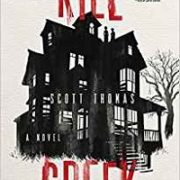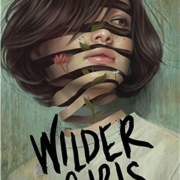Bitter Orange by Claire Fuller
When I first read the summary of BITTER ORANGE by CLAIRE FULLER, I thought it would be a fast-paced murder mystery. I was wrong. Bitter Orange is tense, with plenty of moments that work together to build toward a shocking ending. With a small cast of characters, Fuller intimately explores the intricacies of human nature and the bonds that we form with one another.
Frances Jellico lies on her deathbed. She is dying of what she calls a wasting disease. A vicar visits her to hear her last confession, and Frances takes the opportunity to relive the particular summer that would change her life forever.
Frances is a sheltered woman who lived with her mother. Though she is not an academic, her interests lead her to research architecture and write a paper on the subject. After the paper is published and her mother dies, Frances is hired to survey the garden architecture of an English mansion called Lyntons. When she arrives at the mansion, she discovers two other people living there. Peter has been hired to inventory the estate and is accompanied by his girlfriend, Cara.
Cara and Peter have a volatile relationship, arguing frequently and loudly. During one of these fights, Frances discovers a peephole in the floor of her bathroom that looks down into bathroom of Cara and Peter’s living quarters. Through this hole, Frances sees intimate moments of their relationship.
Frances and Cara become friends and soon, they spend all their free time together. Frances and Peter begin shirking their duty of surveying the Lyntons estate in favor of picnics and swimming with Cara. But as their friendship deepens, Cara’s mental health seems to decline. Cara reveals that she had to give up a son for adoption. Frances assumes this is the source of the couple’s conflict and is filled with sympathy for the young woman.
The trio discover a locked room labeled “Museum” that Peter insists they open. As he bashes down the door with a sledgehammer, Cara tells Frances that her son had been the product of immaculate conception. For the first time, Frances begins to doubt Cara’s sanity.
The situation in the Lyntons mansion quickly escalates, with truths about Cara and Peter revealed to a stunned Frances. She has simply never been around people other than her mother. She becomes convinced that Peter is in love with her and that Cara’s erratic behavior stems from jealousy. After Peter rejects Frances’s advances, the situation in the house deteriorates further.
Ultimately, we discover that there is far more to the story than Frances has revealed. Of course, I don’t want to ruin the ending for you, but I’m sure you can already figure out that nothing in Bitter Orange is exactly what it seems to be.
Bitter Orange would be perfect for analyzing in a literature class. There are a plethora of elements to explore: the theme of motherhood, the recurring symbols of cows, water, ruined houses, and the bitter oranges that grow on the Lyntons estate. Without going into detail (because that would take far more space than I have), I will say that this is a novel that’s full of symbols and symbolic moments. Nothing happens without having meaning.
Fuller’s writing style works well to build a feeling of uneasiness. The story is told in first-person, from Frances’s point of view, which means readers have to rely totally on Frances’s observations and thoughts. My biggest issue with this book comes from this aspect. Personally, I think if a novel is written from one person’s perspective, the reader ought to be able to trust the narrator. Frances’s fragile mental state makes her naïve at best and unreliable at worst.
There are plenty of well-written, fast-paced murder mysteries on the shelves at Joplin Public Library. But if you’re looking for a slow-burning novel that’s about mental health, motherhood, and human nature, then Claire Fuller’s Bitter Orange should be your next read.
Book review by: Leslie Hayes











